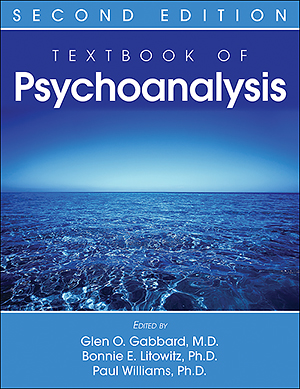Chapter 12.Object Relations
Sections
Excerpt
At the Maudsley Hospital, the United Kingdom’s main psychiatry teaching hospital, there arose in the 1970s and 1980s an experimental ward in which patients with psychosis or very severe personality disorder lived for a year or more while receiving intensive psychiatric care, predominantly psychoanalytic therapy, individually and in groups. An account of the clinical work of this unit and its results is provided in Jackson and Williams’s (1994) Unimaginable Storms: A Search for Meaning in Psychosis. On this ward worked a sensitive, middle-aged black nursing assistant who was the lowest-paid staff member after the cleaners. She was more gifted at talking intimately with patients with psychosis than the doctors or nurses. Eventually, the staff campaigned for her to receive an honor from the Queen of England at Buckingham Palace for her services to mental health. This modest woman talked to patients in a personal way that did not evade the anguish and fear underlying their distress, past or present. She had a knack for framing dialogue in terms of relationships—the relationship between the patient and her, other -patients, him- or herself, family members, friends, or acquaintances as well as the patients’ environment, hobbies, feelings, and experiences. Everything seemed connected to everything else, without orchestration and with no estrangement of inner from outer. She intuited what psychoanalysts refer to as internal “part-object” relationships: fleeting anxieties, terrors, and longings that overwhelm and distract the mind, often reflecting unsatisfactory childhood relationships. Her conversations were alive to these anxieties and the need to talk about them in the context of an enduring, trustworthy relationship. It was here that I began to grasp why it is not possible to understand any of the most important things in life without talking about them with another person who is receptive and open-minded. The process begins with the earliest dyadic relationships; it is internalized and is subsequently reactivated in the transference and countertransference. It is the condition for entering into social relations and has become the domain of inquiry for object relations theory.
Access content
To read the fulltext, please use one of the options below to sign in or purchase access.- Personal login
- Institutional Login
- Sign in via OpenAthens
- Register for access
-
Please login/register if you wish to pair your device and check access availability.
Not a subscriber?
PsychiatryOnline subscription options offer access to the DSM-5 library, books, journals, CME, and patient resources. This all-in-one virtual library provides psychiatrists and mental health professionals with key resources for diagnosis, treatment, research, and professional development.
Need more help? PsychiatryOnline Customer Service may be reached by emailing [email protected] or by calling 800-368-5777 (in the U.S.) or 703-907-7322 (outside the U.S.).



